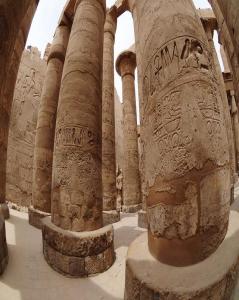The Freer Gallery, one of the two Smithsonian museums of Asian art, recently unveiled the new “The Nile and Ancient Egypt” show. Though the museum is generally dedicated to one specific field, the Gallery has made an exception with its newest addition.
“Most of these objects were collected by Charles Lang Freer himself,” explains Alexander Nagel, curator of the exhibit. It makes sense, therefore, to display them in his eponymous museum. Freer’s mission has been to help scholars connect between various great civilizations throughout human history, an effort that would be lacking if it did not include specimens from the Egyptian empire.
Freer made three trips to Egypt between 1906 and 1909. There, he collected more than 1,500 artifacts, including glass vessels, mosaic tiles and animal-shaped amulets. He explained that the Egyptians had a close relationship with the Nile’s waters, a fact which is reflected in the wave-like decorations on vessels as well as the amulets, which are shaped like river creatures such as crocodiles and hippopotamuses. These amulets were believed to give the wearer protection and blessings.
Freer was a self-made millionaire who retired at the age of 46. He spent the rest of his life collecting art from around the world, focusing primarily on Asian pieces. He traveled to Egypt three times as well, and when he died in 1919, his eclectic collection became the Freer Gallery.
.

